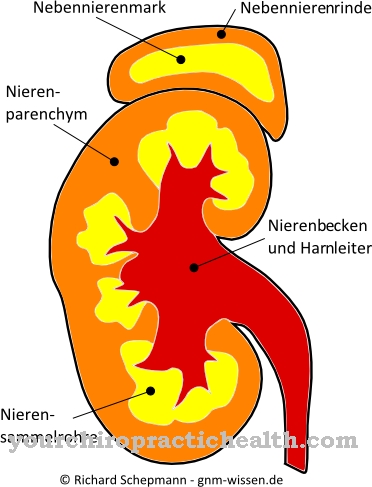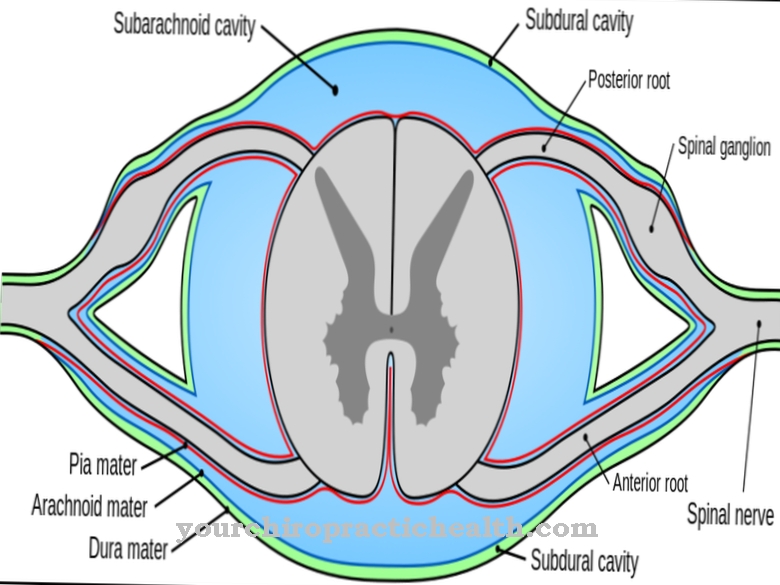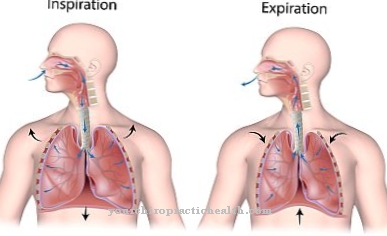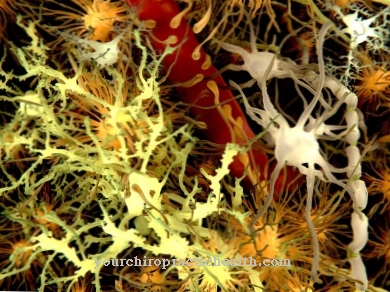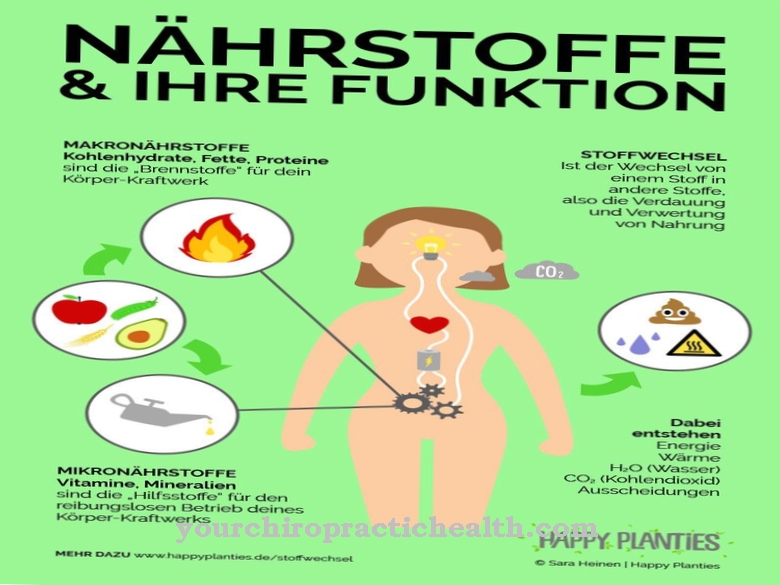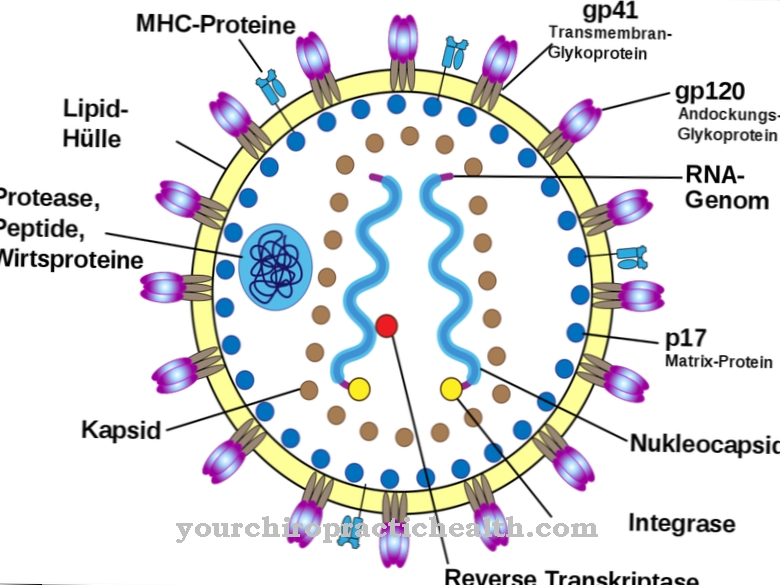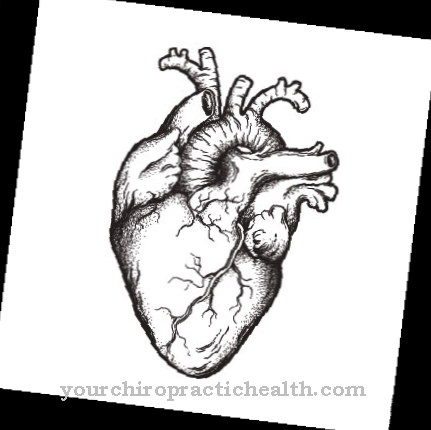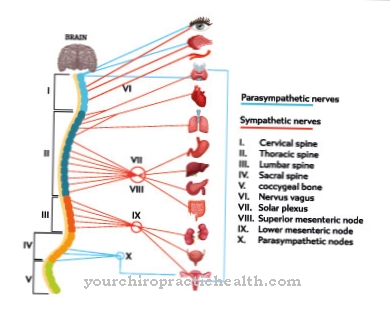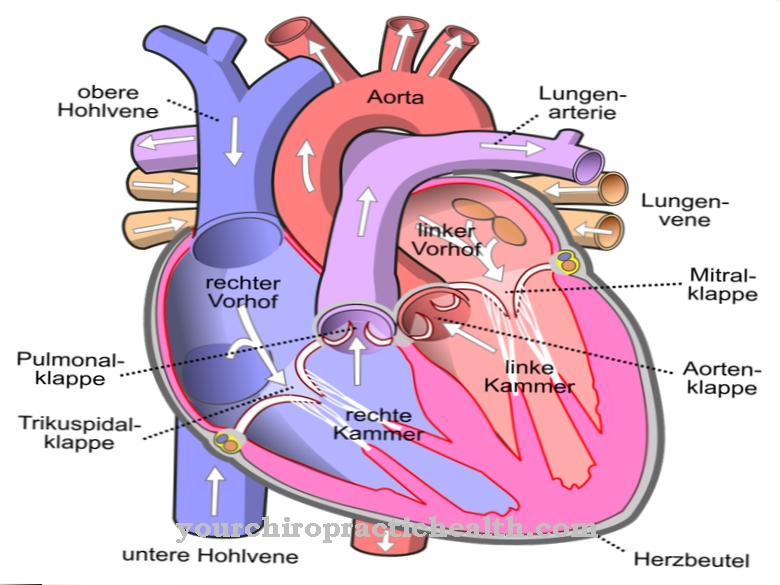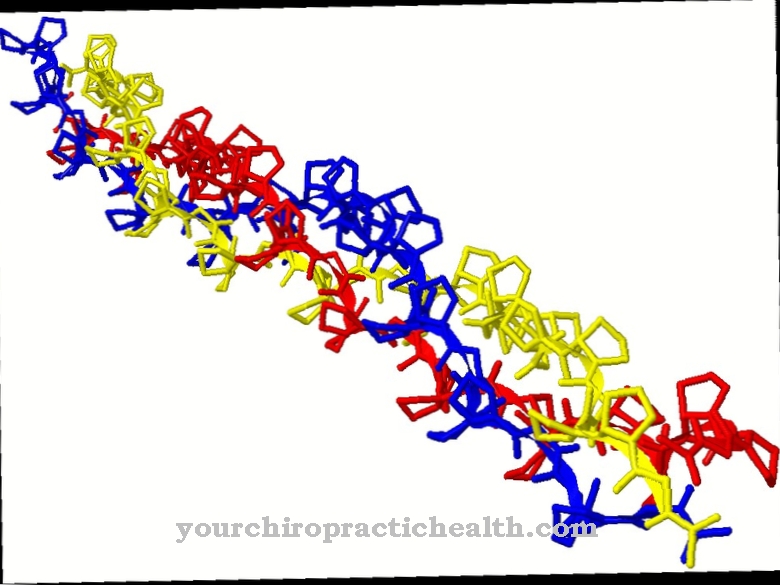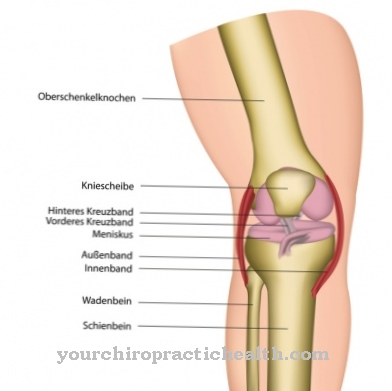Of the Sternohyoideus muscle is a muscle that belongs to the human skeletal muscles. Its path is from the chin down to the sternum. It belongs to the hyoid muscles.
What is the sternohyoid muscle?
The sternohyoid muscle is called the Sternum-hyoid bone muscle designated. Its shape is narrow and its path is perpendicular to the neck. During the act of swallowing, he pulls the hyoid bone downwards. This clears the way for ingested food and nutrition to the stomach.
It is a bilateral muscle that runs along the outside of the neck. In the front center of the neck, both strands are connected to one another by connective tissue. The sternohyoid muscle plays a key role in ensuring a smooth swallowing process. As soon as it contracts, the hyoid bone moves and opens the way into the esophagus. This happens with the onset of the swallowing reflex.
The hyoid bone is fixed to the base of the skull. It does this through ligaments and the muscles that innervate the hyoid bone. In this way, it has a rocking function. On the lower side are the larynx and trachea. The hyoid bone is thus directly connected to processes such as phonotonicity, breathing, opening the jaw, swallowing and coughing. The hyoid bone is a small curved bone below the tongue.
Anatomy & structure
The sternohyoid muscle is one of the striated muscles in humans. Its muscle fibers are arranged in a pattern and are periodically repeating.
This has the consequence that horizontal stripes arise. It is a narrow muscle and one of four muscles that are assigned to the lower hyoid muscles. They include the omohyoideus muscle, the sternohyoideus muscle, the sternothyroideus muscle, and the thyrohyoideus muscle. The path of the sternohyoid muscle begins at the back of the sternum. This is known by medical professionals as the manubrium sterni. This is where the sternohyoid muscle finds its origin at the end of the collarbone, the clavicle.
It runs cranially to the lower edge of the hyoid bone. This is the hyoid bone. Viewed from the outside, the sternohyoid muscle runs vertically between the breastbone and the chin. The sternohyoid muscle is supplied via the nerve fibers from the ansa cervicalis profunda. This is a loop of nerves that is formed from branches of the nerve plexus. The plexus of nerves is called the cervical plexus.
Function & tasks
The sternohyoid muscle has two main tasks. Together with various other muscles in the mouth and throat area, the sternohyoid muscle is involved in the very complex act of swallowing of the human organism. This is divided into different mechanisms. The first is the controlled and willfully induced part.
This includes the intake of food and liquids. That is controlled consciously. After the food has been ground, they pass through the tongue from the oral cavity to the throat. There, deliberate control changes into an automatic process that can no longer be regulated. A swallowing reflex occurs. This transports the absorbed substances from the throat into the esophagus. During this process, the windpipe must be closed. This is the only way to ensure that no food, liquids or saliva can reach the stomach via the esophagus.
Various muscles work together in a matter of seconds within the swallowing reflex. The sternohyoid muscle is responsible for the hyoid bone moving downwards. It belongs to the infrahyric muscles. This means that it belongs to the lower hyoid muscles. The suprahyal muscles are to be distinguished from this. This is assigned to the upper hyoid muscles. In addition to swallowing, your task is to support the opening of the jaw. As soon as the suprahyal muscles are active, the sternohyoid muscle fixes the hyoid bone. This is the second function of the sternohyoid muscle.
You can find your medication here
➔ Medicines against tartar and tooth discolorationDiseases
There are various diseases that have an effect on the functional execution of the sternohyoid muscle. Almost all complaints of the throat and upper throat area can result in problems when swallowing.
In everyday life, eating too hot drinks or food in the mouth up to the throat can lead to scalds and burns. The mucous membranes are attacked and in severe cases, vesicles are formed. Defects in the mucous membranes cause difficulty swallowing. In addition, they have an influence on sound formation. The most common diseases associated with the sternohyoid muscle are inflammation and infarcts. Both are associated with restrictions on the act of swallowing. With enlargement of the lymph or tonsils, such as angina, there is a narrowing of the neck entrance. The swallowing process is difficult and often associated with a feeling of pain. Paralysis or damage to the nerve fibers from the ansa cervicalis profunda mean that the sternohyoid muscle is not innervated. He also shows signs of paralysis.
If there is new formation of the tissue due to edema, cysts or carcinomas, this also leads to a narrowing of the esophagus. The channel between the throat and the upper area of the larynx is no longer free and causes discomfort when swallowing. The larynx is completely surrounded by various cartilages. These can be easily felt from the outside of the neck. Cartilage is not as stable as bone. Therefore, damage from the outside through accidents or falls can lead to cartilage parts being injured. Since the larynx as a whole is involved in the act of swallowing and voice formation, direct effects are to be expected.

